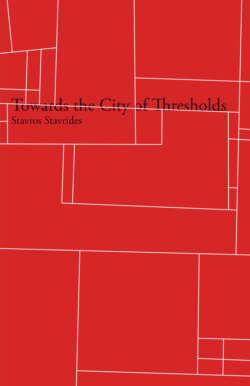Читать книгу Towards the City of Thresholds - Stavros Stavrides - Страница 13
На сайте Литреса книга снята с продажи.
Approaching otherness
ОглавлениеApproaching otherness is a difficult act. In all societies, it is represented as full of symbolic and material dangers. But approaching otherness is also a constitutive act of every social encounter. Every society or social group would appear to be characterized by the ways it controls and formalizes these acts of encounter. If the encounter is considered only as a necessary step to verify and deploy hostility between groups of people, then the act of crossing borders will only be an act of symbolic or actual war. This form of encounter characterizes communities that describe everything outside of them as potentially hostile. It is not by chance that these communities build shelters protected by material or symbolic walls with drawbridges that are drawn most of the time. Contemporary gated communities are an obvious example of such an attitude.
If, however, the encounter is part of an effort to embrace otherness without an intermediary phase of mutual recognition and negotiation gestures, we may end up with a virtual extinction or assimilation of otherness. In contemporary consumer culture everybody is forced to be on the move, chasing ever-new products, ever-new sensations. As Zygmunt Bauman points out: “Consumers are first and foremost gatherers of sensations” (1998, 83). What appears a new desirable sensation is a kind of fabricated otherness. Fabricated by the continuous, consumer-oriented education of the senses in the media and advertising images. Towards such an otherness, the citizen-consumer is all too eager to cross the borders. And with a similar attitude, guided by desire-propelling exoticism, the consumer assimilates otherness while touring in a foreign land, only to add new sensation-trophies.
In order to approach otherness in an act of mutual awareness, one needs to carefully dwell on the threshold. In this transitory territory that belongs to neither of the neighboring parts, one understands that it is necessary to feel the distance so as to be able to erect the bridge. Hostility arises from the preservation and increase of this distance while assimilation results from the obliteration of distance. Encounter is realized by keeping the necessary distance while crossing it at the same time. The wisdom hidden in the threshold experience lies in the awareness that otherness can only be approached by opening the borders of identity, forming—so to speak—intermediary zones of doubt, ambivalence, hybridity, and negotiation. As Richard Sennett remarks: “In order to sense the Other, one must do the work of accepting oneself as incomplete” (1993, 148).
These zones may require gestures that are not performed as indices of identity characteristics but mainly as acts of approaching. Therefore, the gestures will have an equally hybrid status, describing an intermediary identity offered as meeting place. This intermediary identity is perhaps what results from the “subjunctive mood” that Turner connects with liminality (Turner 1982, 84). Intermediary identities are performed only to test the other’s will of contact. They are performed not to hide or to deceive but to offer ways to depart from a fenced-in self towards a self constructed through the encounter.
Sennett describes civility as the “treating [of] others as though they were strangers and forging a social bond upon that social distance” (1977, 264). If we understand civility as part of an art of building thresholds between people or social groups, then we can agree with Sennett and his defense of a new public culture. This culture would be characterized by this continuous effort to preserve otherness and to create in-between areas of negotiation. And a curious, difficult-to-define theatricality seems to be performed in such gestures of reconnaissance and mutual approach. Brechtian theatricality seems to dwell in thresholds. One departs from themselves to be an other. This temporary transformation is seen as a gesture—a Gestus, in Brecht’s vocabulary—of seeking to understand what is other than him or herself. Theatricality is the common element in the behavior of liminal actors during rites of passage and contemporary strangers groping their way towards each other through a modern version of civility.
The human ability to become other is at the foundation of such an experience of a “subjunctive mood.” This socially constructed ability helps people to meet others without forcing them into precast identities. Being able to become other, even if one returns again to one’s former self, is being able to accept otherness and, potentially, a position from which to construct a relationship with the other as other. Isn’t imagination after all this curious staging of reality that creates thoughts and feelings out of nonexistent happenings that are actually performed in the mind? And isn’t this an exploratory encounter with otherness in its purest form?
